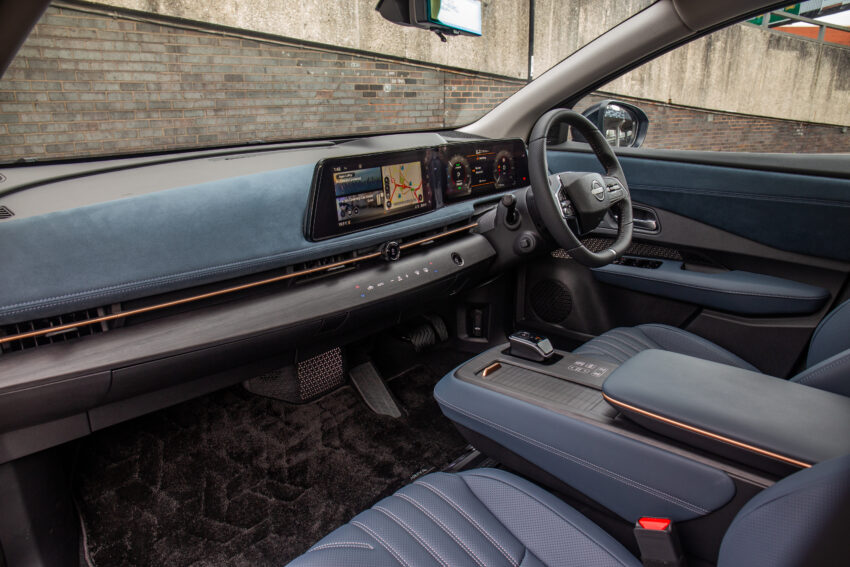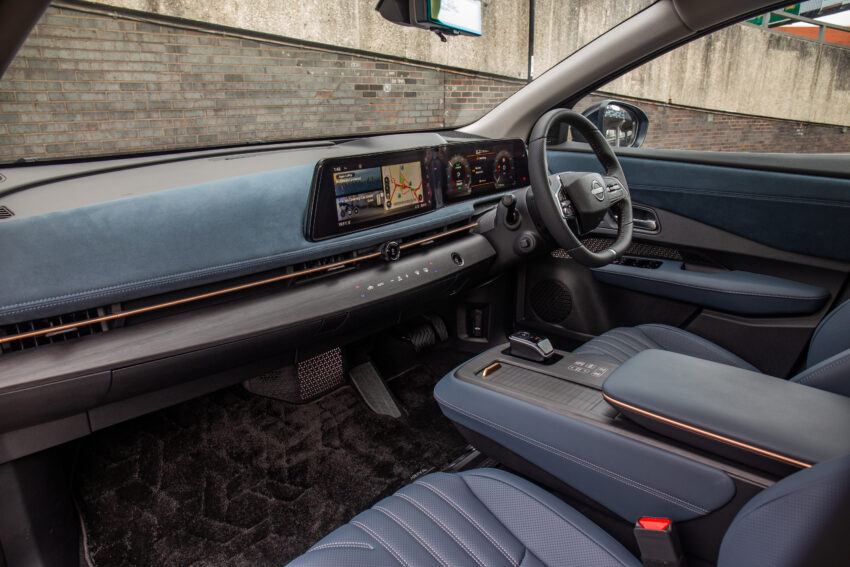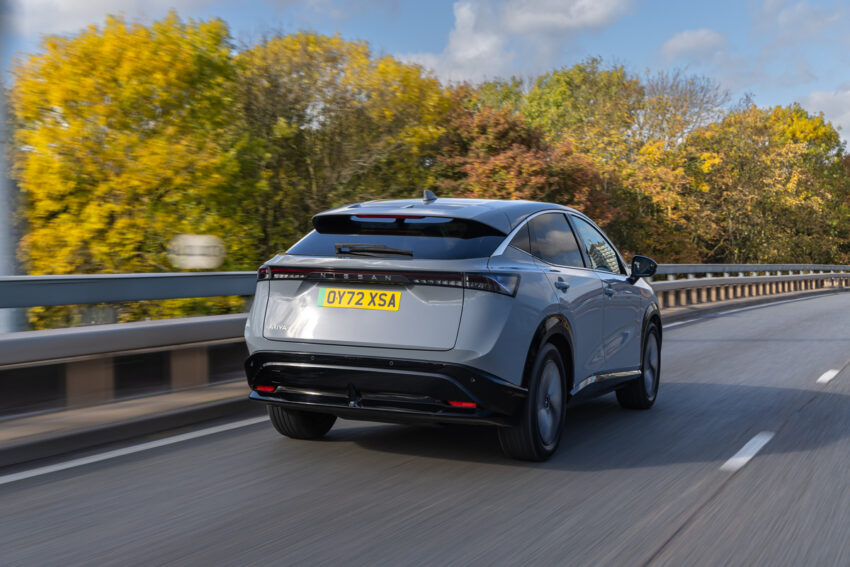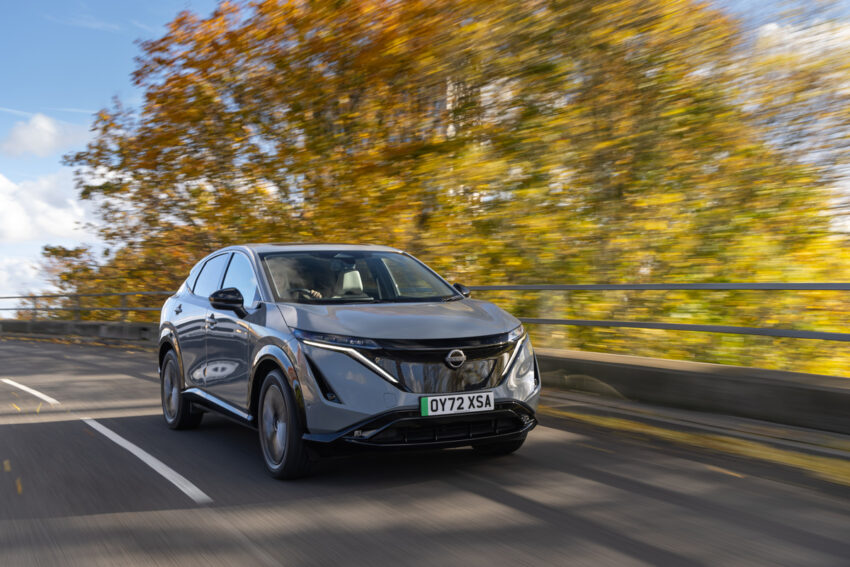Nissan Ariya review
The Nissan Ariya is the latest electric model from one of the pioneers of mainstream EVs but can it compete in an increasingly crowded market?
was a real electric pioneer with the original Leaf.
That family hatchback was one of the first truly mainstream EVs, offering a relatively affordable and practical way into electric motoring.
Even the second generation broke new ground with its range and charging speed. But after that launched in 2017 Nissan went a bit quiet on the EV front, focusing harder on its hybrid offering.
In fact, it took eight years for Nissan to launch a follow-up, in the shape of the Ariya.
Nissan’s newest EV is a high-spec, long-range EV with eye-catching looks and some smart features but is it enough to put Nissan back among the major players in the electric car world?
Design and interior
Nissan says the Ariya’s design is all about ‘timeless futurism’ and throws around buzzwords like sleek, sexy and seamless. We can discount the middle of those immediately but the overall shape is fairly sleek and seamless.
Nissan’s designers have stuck with a few simple lines rather than cover the Ariya with dramatic creases and edges. That’s to its benefit as it gives a pleasing simplicity to the shape from the slimline headlights back to the dipping rear roof line. Whether it’s attractive is a matter of personal taste. Having spent two weeks with it, I still can’t decide whether I’m a fan of the Ariya’s looks or not.
The interior is more convincing. Nissan has gone for a lounge-like atmosphere and this is clearly the nicest interior of any Nissan to date. The completely smooth wood-effect dash and centre console cleverly conceal backlit haptic buttons for most key functions, giving a beautifully clean look.

In lower grades there’s a cream finish to the rest of the car but top-spec Evolve models replace that with an utterly unique blue suede-effect finish to the dash top and doors. This looks and feels brilliant and is neatly complemented by a matching shade of leather on the seats and copper coloured highlights on the dashboard and other trim elements.
The Ariya is pitched as a family SUV and there’s certainly plenty of room, wherever you sit. A Kia EV6 or Ford Mustang Mach-e might offer a fraction more rear legroom but there’s still lots of space for four average adults and the flat floor and panoramic sunroof help in creating an airy feeling space.
The boot’s a reasonable 466 litres, with useful spaces for charging cables around the wheel arches, but other practical matters let it down. The movable motorised centre console takes up lots of space but offers virtually no storage – unlike most rivals. There’s also not much in the way of incidental storage elsewhere apart from a small powered tray that slides out of the dashboard. It’s an odd lack of space for small items in such a big car.
The user interface is also disappointing. The infotainment system is big but basic looking, and it and the haptic buttons aren’t responsive enough. It’s not always clear if your input has been recognised and the system is just slow to respond or if you haven’t pressed hard enough.
Battery, motor and performance
The Ariya comes in four powertrain configurations. Entry level cars are two-wheel-drive affairs with a single 215bhp motor driving the rear wheels and a 63kWh battery. You can upgrade that battery to an 82kWh unit, which also brings a power boost to 239bhp, or opt for an e-4orce model. That adds a second motor for a total of 302bhp and comes exclusively with the larger battery. On top of that, Evolve+ specification upgrades the output to 389bhp and cuts the 0-62mph acceleration from 5.7 seconds to 5.1 seconds.

I spent my time in a “regular” Evolve model with e-4orce all-wheel drive and the 306bhp felt sufficient. The Ariya isn’t light – 2.3 tonnes – but it still makes remarkably sprightly progress for such a large car. In common with all EVs, there’s instant throttle response and an initial surge of acceleration, which the Ariya maintains well up to motorway speeds.
I drove the Ariya during a spell of cold and wet weather and the e-4orce system did a commendable job of controlling the power distribution in sometimes tricky conditions. It felt composed, secure and safe and displayed impressive levels of grip. It’s not engaging in the way that the Ford Mustang Mach-e is, but there’s a solid, confidence-inspiring way to how the Ariya makes progress, with a decent ride and accurate steering.
You can read more about the e-4orce system and how it coped with the truly extreme conditions in frozen Finland here.
While it showed off the four-wheel-drive system’s capabilities, the cold weather didn’t do the Ariya’s efficiency any favours. Officially, the four-wheel-drive Ariya will do 310 miles. I was being promised a still-useful 245 miles on a full charge but efficiency after two weeks of mixed driving was a disappointing 2.4m/kWh. For reference, a Skoda Enyaq Coupe used in similar conditions returned 2.7m/kWh.
All Ariyas offer DC charging at up to 130kW. Nissan says that should allow for a 20-80% charge of the 87kWh battery in 40 minutes.
Price and specification
Nissan recently revised the Ariya price structure to make it more competitive after initial complaints that it was more expensive than rival models.
The range starts at just under £40,000 for a two-wheel-drive Engage trim with the smaller battery. However, go looking for more generous equipment, a bigger battery or four-wheel-drive and prices climb quickly. My test car was £54,840 before the addition of the £1,995 Sport Pack and £745 deathly dull grey paint.
That’s pretty punchy, but a similarly powered and specced Kia EV6 is around the same price, as is a VW ID.4. A Ford Mustang Mach-E with a similar battery and motor setup is also north of £58,000.
At the top end of the range, you do get a lot of gadgets for your money. These range from a head-up display and opening panoramic roof to the blue interior upholstery and three-stage heated seats in the rear. But it’s debatable whether they’re worth the £4,000 over the already well-specced Advance trim.
Verdict
Get past the somewhat challenging looks and occasionally frustrating user interface and there’s a lot to like about the Ariya. The interior is spacious and stylish and the high-spec powertrain offers a strong blend of performance and reassuring composure. It doesn’t break new ground like the Leaf but does give Nissan a credible contender in a packed market.

Nissan Ariya e-4orce Evolve
- Price: £57,580
- Motor: Twin motor
- Battery: 87kWh usable
- Power: 302bhp
- Torque: 443lb ft
- Transmission: Single-speed, four-wheel-drive
- Top speed: 124mph
- 0-62mph: 5.7 seconds
- Range: 309 miles
- Consumption: 3.55m/kWh
- Charging: up to 130kW






